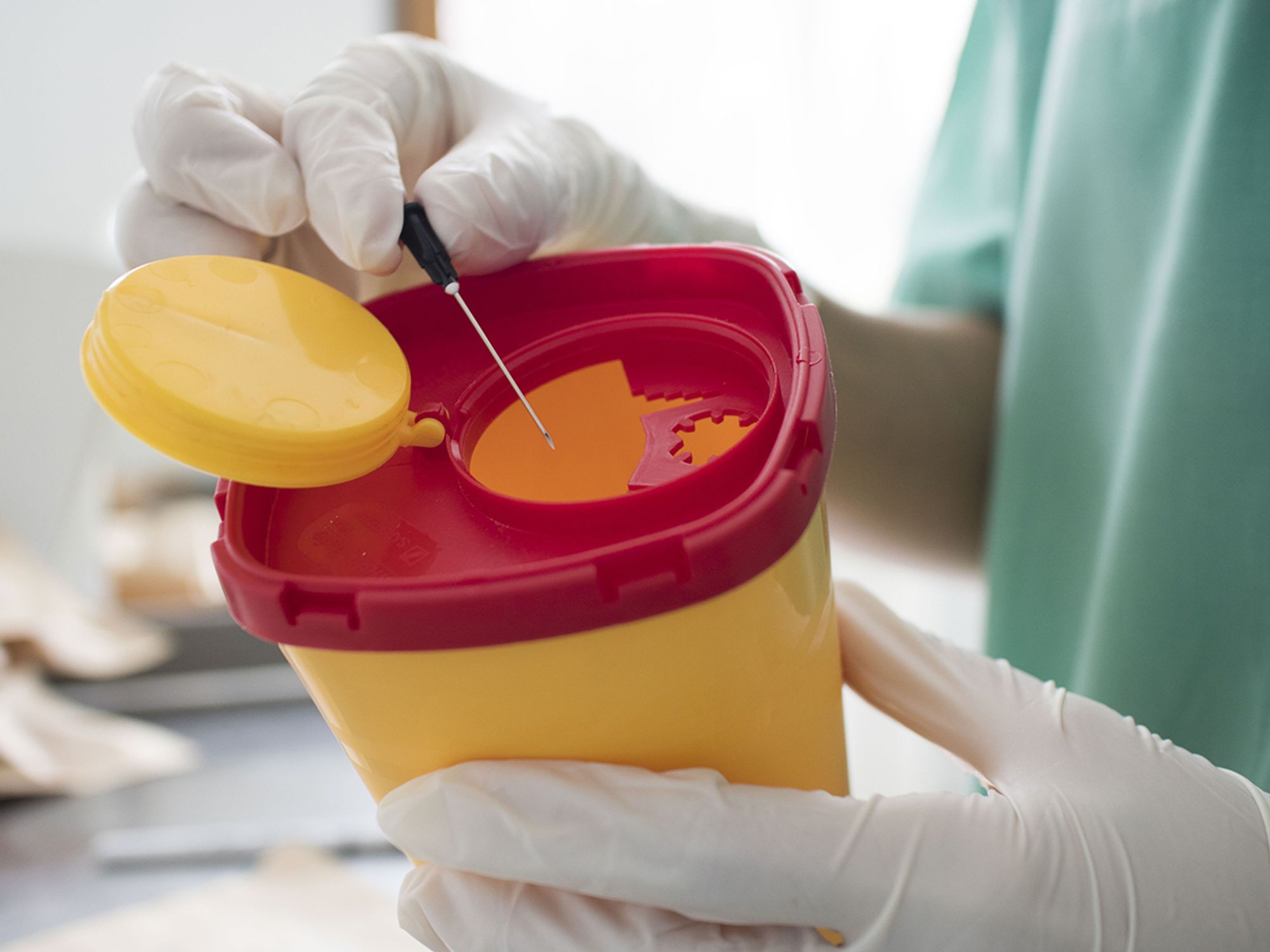Who’s protected?

- All employees with occupational exposure are protected by 1910.1030.
- To have occupational exposure, workers must be able to reasonably anticipate contact with blood or OPIM in the course of their job duties.
All employees who have occupational exposure must be trained in bloodborne pathogens procedures. This applies to all classifications of employees: full-time, part-time, contract, and temporary.
“Occupational exposure” refers to reasonably anticipated contact with blood or other potentially infectious materials (OPIM), in contrast to an “exposure incident,” in which actual contact occurs.
For bloodborne pathogens training to be required for an employee, contact with blood or OPIM must be reasonably anticipated, and this contact must result from the performance of the employee’s duties.
As an example, an office worker would not reasonably anticipate having contact with blood or OPIM. However, if the office worker is assigned to perform first aid when coworkers are bleeding, then that employee is considered to have occupational exposure.
Related job classifications
Job duties do not need to be healthcare-related to be covered. The Occupational Safety and Health Administration (OSHA) doesn’t list jobs or tasks with occupational exposure, so this is left to employers to determine.
If only some employees in a job class have occupational exposure, the employer must identify which tasks in those jobs present occupational exposure.
Some job classifications that may have occupational exposure include:
|
|
*The first-aid provider category includes (1) employees designated to perform first aid, (2) employees who render first aid only as a collateral duty, and (3) employees who routinely provide first aid to fellow employees with the knowledge of the employer and fall de facto under this designation even if the employer has not officially designated the employee as a first-aid provider. Good Samaritans are not included unless they otherwise meet criteria (1), (2), or (3).
Contract and temporary workers
In contract situations, both the contractor employer and the client share responsibility for ensuring that contract employees are protected. Likewise, for temporary employees, both the staffing agency and host employer are considered joint employers of those employees. In either scenario, it’s in the interest of both employers to ensure that the required training is provided.
Contract employees: An OSHA letter of interpretation from September 1992 explains that the contractor that employs the worker is expected to provide required vaccinations, generic training in universal precautions, and any follow-up evaluation after an exposure incident. The contractor’s client (commonly referred to as the host employer), who creates and controls hazards, must provide site-specific training and personal protective equipment (PPE) and is responsible for controlling exposures.
Temporary employees: OSHA Temporary Worker Initiative Bulletin No. 6 says that when a staffing agency supplies temporary employees to a business, the agency and the host employer are considered joint employers of those workers. Both are responsible for ensuring that the temporary employees are properly protected against bloodborne pathogens. However, the employers may decide to divide up the compliance responsibility. Generally, the two employers split responsibilities as follows:
| Typical host employer responsibilities | Typical staffing agency responsibilities |
|---|---|
|
|
In addition, the employer who has day-to-day supervision over the temporary employees, typically the host employer, is required under 29 CFR 1904 to maintain a log of occupational injuries and illnesses, including for temporary workers. The Bloodborne Pathogens Standard requires that this employer must also keep a sharps injury log to record percutaneous (through the skin) injuries from contaminated sharps, including injuries to temporary employees. [Source: Temporary Worker Initiative Bulletin No. 6, OSHA 3888-09 2016]
